Secure Checkout. FREE SHIPPING for Continental U.S. Orders over $60.
Menu
-
- Home
-
About Us
-
The Approach
-
Linking Language & Literacy
-
MindWing Learning
-
Learning Resources
-
SHOP
-
Blog
-
- About MindWing
- Our People
- Contact Us
- Your Account
- Login
-
United States (USD $)
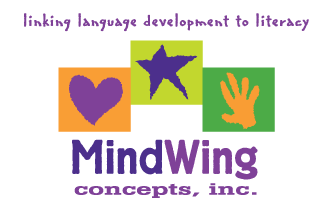
Secure Checkout. FREE SHIPPING for Continental U.S. Orders over $60.

Autism Awareness & SGM®: 31 FREE RESOURCES
April 05, 2016 1 Comment
In recognition of Autism Awareness Month, we would like to share with you 31 Blog Posts, Free Lessons, Webinars and Videos that focus on social communication which can be used to help children along the Autism Spectrum. The themes in these blogs/lessons/videos/webinars are perspective-taking, social problem solving, critical  thinking, social emotions, theory of mind, story-telling and more! In addition to these FREE resources, for the month of April our Autism/Social Communication Collection is $50 OFF! The sale price is $99.95 for the whole collection (normally $149.95)! We want to give you the chance to use this kit of materials with the population of students who can benefit from it most...
thinking, social emotions, theory of mind, story-telling and more! In addition to these FREE resources, for the month of April our Autism/Social Communication Collection is $50 OFF! The sale price is $99.95 for the whole collection (normally $149.95)! We want to give you the chance to use this kit of materials with the population of students who can benefit from it most...

Read Across America Day & Dr. Seuss Lesson!
February 29, 2016
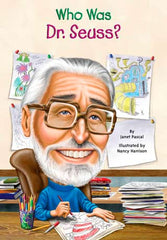 As always, I began writing my lesson by gathering my focus book and Story Grammar Marker® Mini-Posters. Since the children enjoyed our recent Rosa Parks read aloud Who was Rosa Parks? written by Yona Zeldis McDonough, this week I chose Who Was Dr. Seuss? written by Janet B. Pascal from the same series. I planned the lesson to coincide with Read Across America Day on March 2, which is Dr. Seuss’ birthday. The lexile measure of this book is 820L. The following lesson suggestions were designed for grades 3 and 4. Lessons may be modified to meet your student’s needs. Many people ask how I go about creating lessons to use the SGM®. Really, it is the opposite thinking, as I always have asked myself: How can the SGM® be used to enhance the lessons I already do and target skills that I am trying to teach?...
As always, I began writing my lesson by gathering my focus book and Story Grammar Marker® Mini-Posters. Since the children enjoyed our recent Rosa Parks read aloud Who was Rosa Parks? written by Yona Zeldis McDonough, this week I chose Who Was Dr. Seuss? written by Janet B. Pascal from the same series. I planned the lesson to coincide with Read Across America Day on March 2, which is Dr. Seuss’ birthday. The lexile measure of this book is 820L. The following lesson suggestions were designed for grades 3 and 4. Lessons may be modified to meet your student’s needs. Many people ask how I go about creating lessons to use the SGM®. Really, it is the opposite thinking, as I always have asked myself: How can the SGM® be used to enhance the lessons I already do and target skills that I am trying to teach?...

Understanding Novels / Chapter Books with SGM — Part 5
February 23, 2016
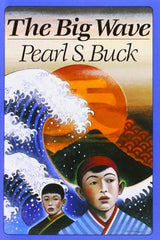 This next section of analysis of The Big Wave by Pearl Buck begins with personification of the sea and extends the overall themes of friendship, resilience, overcoming obstacles and gratitude leading to new beginnings. The Critical Thinking Triangle® and the Complete Episode maps of the Story Grammar Marker® assist students in qualitative analysis of the plot to form opinions and apply the themes to their own lives. Pages 15-22:Through personification, the sea is described as cruel and angry. These pages contain the steps leading up to the kick-off of the first major episode in the novel. The expandable Get Ready for the Kick-Off map from Talk to Write, Write to Learn manual would be useful here showing that there is evidence that something is happening...
This next section of analysis of The Big Wave by Pearl Buck begins with personification of the sea and extends the overall themes of friendship, resilience, overcoming obstacles and gratitude leading to new beginnings. The Critical Thinking Triangle® and the Complete Episode maps of the Story Grammar Marker® assist students in qualitative analysis of the plot to form opinions and apply the themes to their own lives. Pages 15-22:Through personification, the sea is described as cruel and angry. These pages contain the steps leading up to the kick-off of the first major episode in the novel. The expandable Get Ready for the Kick-Off map from Talk to Write, Write to Learn manual would be useful here showing that there is evidence that something is happening...
Blending Narrative and Expository Texts and Building Rigor
February 12, 2016 2 Comments
Black History Month Lesson 2
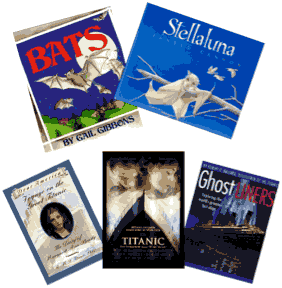 A large focus for us this year is to share how to use Story Grammar Marker® methodology for both Narrative and Expository text selections. As a manner of best practice, Maryellen Moreau, creator of the Story Grammar Marker® has always paired narrative and expository texts together in her workshops. Camp (2000) introduced a concept called “twin texts” describing a way to pair books together. “Twin texts” are two books, one fiction and one non-fiction that are presented together in a lesson to get children excited about learning and activate prior knowledge. “Teachers can integrate language arts, science, social studies, and other content areas by using children’s literature as a bridge” (Camp, 2000, p. 400). This pairing of twin texts...
A large focus for us this year is to share how to use Story Grammar Marker® methodology for both Narrative and Expository text selections. As a manner of best practice, Maryellen Moreau, creator of the Story Grammar Marker® has always paired narrative and expository texts together in her workshops. Camp (2000) introduced a concept called “twin texts” describing a way to pair books together. “Twin texts” are two books, one fiction and one non-fiction that are presented together in a lesson to get children excited about learning and activate prior knowledge. “Teachers can integrate language arts, science, social studies, and other content areas by using children’s literature as a bridge” (Camp, 2000, p. 400). This pairing of twin texts...

Understanding Novels / Chapter Books with SGM
January 14, 2016
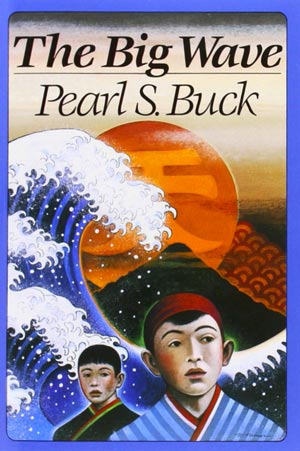
This year, one of our website goals is to provide lessons using novels, chapters from chapter books, short stories and, yes, picture books for clinicians and teachers who work with middle and high school students who are in need of discourse level language development services. On our yearly visit to each of the boroughs of New York City in December, 2015, many participants asked for such “higher level” examples.
It is important to note that picture books are key to development of narrative thought, social communication and inference building through the recognition of literary elements such as feelings, plans, mental states of characters through the coupling of illustrations and text. Often the clues to these vital elements are not visible when illustrations are not available...

Setting Activity—The Little House
January 12, 2016
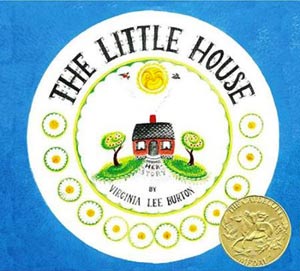 The Little House by Virginia Lee Burton was first published in 1942 but remains a favorite of many. It tells the story of a Little House — from the house’s perspective — that is located in the country, is lived in, and surrounded by beauty.
The Little House by Virginia Lee Burton was first published in 1942 but remains a favorite of many. It tells the story of a Little House — from the house’s perspective — that is located in the country, is lived in, and surrounded by beauty.
As the Little House sees the distant lights of the city, she wonders what it would be like to live in the city, and as time goes on, she finds the city growing until she is surrounded by it and no one lives in her anymore...
